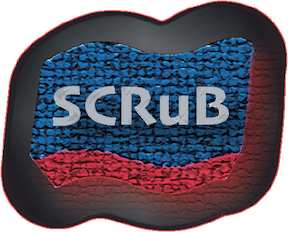Inputs & Outputs for SCRuB in QIIME2
Environment setup
To use SCRuB’s QIIME2 plugin, you must have run both the SCRuB R and QIIME2 installation commands shown here from within a QIIME2 environment. The summary of the plugin’s inputs and outputs are as follows:
Inputs
- table
- The table is of the Qiime2 type
FeatureTable[Frequency], where the rows are features (e.g. ASVs/microbes), the columns are samples, and the entries are the number of sequences for each sample-feature pair. This table must be of shapen_taxax(n_samples+n_controls), wheren_samplesis the number of samples,n_controlsis the number of negative controls, andn_taxais the number of features in the count matrix
- The table is of the Qiime2 type
- metadata
- This is a QIIME2 formatted metadata
(e.g. tsv format) where the rows are samples matched to the (1) table
and the columns are different sample data (e.g. time point).
- This is a QIIME2 formatted metadata
(e.g. tsv format) where the rows are samples matched to the (1) table
and the columns are different sample data (e.g. time point).
- control_idx_column
- This is the name of the column in the (2) metadata that indicates the which samples should be treated as negative controls. If no input is specified, SCRuB will try to identify negative controls by searching for a metadata column of ‘empo_2’ or ‘qiita_empo_2’, and identifying which entries contain the keyword ‘negative’
- sample_type_column
- This is the name of the column in the (2) metadata that indicates the sample type, which specifies the groupings of negative controls SCRuB should use for decontamination. Default is ‘sample_type’
- ( Optional )
well_location_column
- This is the name of the column in the (2) metadata that indicates the well of each sample, which specifies the groupings of negative controls SCRuB should use for decontamination. Default is ‘well_id’
- ( Optional )
control_order
- specifies the ordering which the negative controls from
sample_typeshould be run. Default input (NA) uses the ordering in which the sample are found in the metadata table.
- specifies the ordering which the negative controls from
- output-dir
- The desired location of the output file
Outputs
Depending on the interface, SCRuB’s Qiime2 pliugin either:
1)
Writes the decontaminated .qza format table to the specified path
(Qiime2 and Command line interface)
2) returns a dataframe of
decontaminated samples (Python interface)
For more detail, please refer to the QIIME2 Tutorial, or refer to the jupyter notebooks found here.
